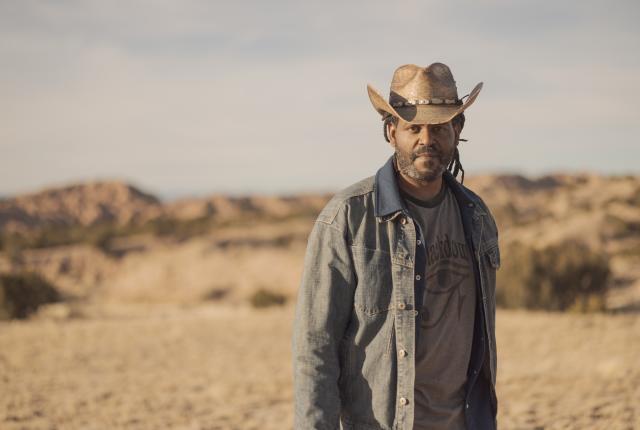“BLACKDOM WAS A REAL PLACE,” Timothy E. Nelson insists. The Santa Fe–based historian introduces his book about the early 20th-century Black homesteader colony in Chaves County with the simple fact of its onetime existence 15 miles south of Roswell—because, in Nelson’s retelling, even his own brother thought he made the town up. (Never mind the decade of research Nelson did to write his doctoral dissertation on the place for the University of Texas at El Paso.) In Blackdom, New Mexico: The Significance of the Afro-Frontier, 1900–1930 (Texas Tech University Press), Nelson sifts through the historical record and finds it lacking, particularly the long-held notion that Blackdom was a failed Afrotopian experiment. New source materials now suggest that the oil-rich town built generational wealth for its Black founders. Along with his speaking engagements, Nelson’s company, Blackdom Productions LLC, is devoted to increasing awareness of the history, spirit, and resonance of this frontier boomtown.
THIRTEEN FOUNDERS decided to start Blackdom in 1903. It would have been a lot more difficult to do that elsewhere because of Jim Crow laws.
THEY USED the homestead laws and the laws in the territory to their advantage—to strike oil, to build families, to build wealth, to travel. Because in certain places, like Texas, it was pretty dangerous to travel around.
IT TOOK ABOUT TWO WEEKS for word of Blackdom to spread all over the country. By then, all the Black media outlets and all the major outlets for the Associated Press knew that Blackdom had been started. After that, they never stopped advertising for people to come to Blackdom.
PEOPLE WERE TALKING about it as a refuge for Black people. That was the nature of promoting it. But eventually it was more about economic development.
MY RESEARCH CORRECTS THE MYTH that Blackdom failed.
WHAT HISTORIANS HAVE SAID is that [co-founder] Frank Boyer left in 1922 to move to Doña Ana County because Blackdom failed. He left in 1922 because the Ku Klux Klan took over Chaves County. But Boyer maintained that Blackdom Oil produced royalty payments into the post–World War II era.
IN NEW MEXICO, you have a tricultural narrative that has been loaded—this myth of White people and Spanish people and Indigenous people. Who does not fit there? Black folks. So what happens when you have Black folks who strike oil in the first 100 years of the state?
ALL OF THE MAJOR families who settled Blackdom still have land. You can’t say it failed if they still own miles of land after paying taxes for over 100 years.
MOST PEOPLE WOULD SAY about Blackdom: “Why do you care? It doesn’t exist anymore.” Well, my grandfather, who was from Texas and always wore cowboy boots, just passed. Does he not exist? Does what he did in his life not matter? He is part of a cohort of people, and you can see that Frank Boyer is part of a cohort of people.
NOW WE CAN START describing the people that have been ignored.
I STARTED OFF homeless in LA with my mother. So “home” to me has a ring to it. Researching Blackdom was my going home, in New Mexico, because I found my people. The ideas they brought with them and developed—the church, the Masonic lodges, and the military—were the same ones that developed me.
IS IT IMPORTANT THAT Blackdom just existed, or is it important what they did there? We have to start being a little more nuanced and advanced in our evaluation.
ONE OF MY FAVORITE THINGS about New Mexico is chile. My business partner, Marissa Roybal, introduced me to real chile. Every year she got her big bag of Socorro green chile roasted by the Leyba family. My favorite part is that the way of making and eating chile is multigenerational. It means more than just going to pick up chile. There’s a spiritual connection behind it.
SEE FOR YOURSELF
Find Timothy E. Nelson’s Blackdom, New Mexico and more at blackdomthesis.com. Nelson presents his book February 8 at Bookworks, in Albuquerque, and at Santa Fe Public Library branches on February 10 and 25.



